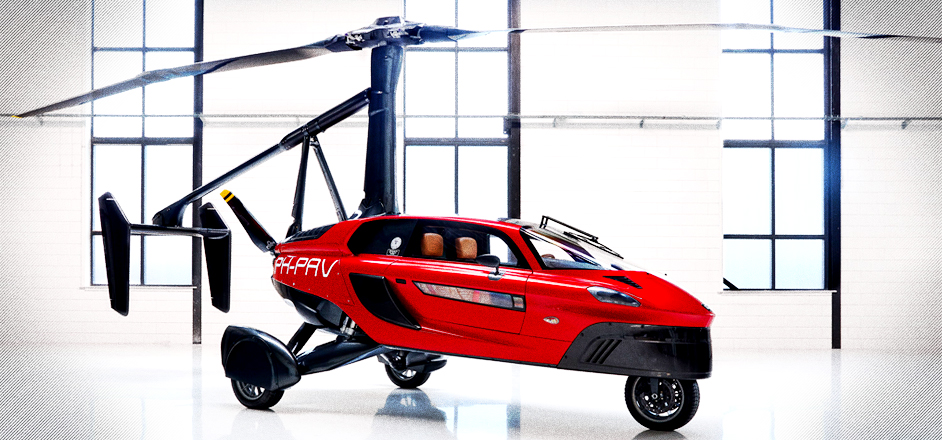Grab a set of keys for the PAL-V Liberty, a sportscar helicopter and the world’s first flying car.
Last week, the world’s first flying car was teased at the Geneva Motor Show by the obscure U.K. company PAL-V.
Dubbed the PAL-V Liberty, this two-person car that flies — or if you prefer, a helicopter plane with enough pick-up to drive highways — will finally push us into the future we thought we’d be living in during the '80s … after all, our latest and greatest innovation lately has been fidget spinners.
Fidget. Spinners.

“The production model is the moment of truth. The moment where the walls between fiction and facts is torn down. A production model is the last stage in the R&D process before starting full production and delivery,” says PAL-V CEO Robert Dingemanse. Now, all that stands in the way of PAL-V throwing us the keys is a compliance demonstration certification that guarantees its safety and adherence to road and air regulations, however Dingemanse doesn’t expect that to take much time.
“Instead of opting for a flying car concept on the basis of not yet existing or immature technologies, requiring new regulations, we deliberately chose to design, engineer, and manufacture a flying car with proven technologies,” Dingemanse adds. “This approach enables a realistic and imminent first product delivery date.”
This is good news for everyone, considering PAL-V has been working on its flying car for over a decade.

The first model, The Pioneer Edition, is projected to ship to buyers in 2019. Only 90 of this edition will be sold, and only to those in the U.S. and Europe (due to regulations, yadda, yadda). Following this release, PAL-V will distribute its smaller Liberty Sports models. For how much dinero? Between $399,00 to $599,000 for the sport and Pioneer versions, which isn’t too bad considering IT FLIES.
Owners will need licenses for both roads and airways to operate this toy, but PAL-V attests flying the Liberty is easier than operating a gyroplane. After all, it’s made to be an easy, self-stabilizing aircraft that is 80 percent less affected by turbulence.
On a full tank of gas, you’ll get a max of 4.3 hours flying time and feel free to use regular ol’ gas-station gas or Mogas, which is available at many airports. Switch from fly to drive mode and the car reaches 99 mph in less than 9 seconds.
Yes, it’s supposed to feel like a sportscar, with full-leather upholstery and a sleek, low body. PAL-V collaborated with Italian design bureaus for its image inspiration, drawing on the elegant and slick aesthetic of heritage Italian supercars.

At the same time, we hate to admit the PAL-V Liberty reminds us a pinch of a Mr. Bean mini-car with a makeshift propeller welded on top. But in the end, you wouldn’t drive the PAL-V for looks (that’s what non-flying Porsches are for). You’d drive it to fly.
By fly we mean travel quickly. Stuck in that 5 o’clock rush-hour traffic? Fly home (that is, if you have a runway to support the landing requirements). In turn, say you’re at a connecting flight on a shitty airline and it’s delayed due to rain. If you had a PAL-V you could continue your route by driving, then lift-off again once the weather turns.
PAL-V touts their flying car is “designed for those who value time,” and even created a guide to which type of flyer you are, from the busy entrepreneur to the rich billionaire who wasn’t to be on the cutting edge. We’ve got no shame admitting we’d use it to visit In-n-Out every week, which isn’t on the list.
The only downside to this amazing piece of auto-air-motive machinery: it won’t make parking any easier.




Leave a Reply
You must be logged in to post a comment.